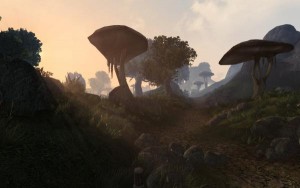In a discussion from an RPG forum someone dug up one of my old posts in which I had written a lengthy piece about adventure design. I had actually long forgotten about ever having written it and it turns out to have been just two months before I started this website. Reading it again, I am quite pleased with it, and so I want to preserve it here for the future:
—
The standard types of adventure modules
As I see it, there are basically two main types of adventures, when it comes to published adventure modules. Plot-based adventure (“Paizo-style”) and site-based adventures (“Gygax-style”). Both come with a number of advantages and disadvantages. First, let me say a few words about “plot”. A plot is a sequence of events that are put into a logical order that forms a chain of causes and effects. This is not the same as a story. A story can be made up as you go, with new and unexpected things happening and no real idea how things will turn out in the end. When talking about plots, it means the entire chain of events from the beginning to the end. The term “plotting” is often used to mean making a plan, and in statistics it means making a graphic representation of data points (events). In either case, a specific outcome is desired, or the events have already happened and can now be analyzed. When you start reading a book, watching a movie, or playing a video game, the entire story is already determined and the outcome set, which is why the terms story and plot are used interchangably.
Plot-based adventures
In what I called the Paizo-style adventure, the entire is already plotted out. “PCs get their quest from that NPC, go to that location, fight that monster, find that clue, follow to the next location, fight the villain, stop his evil plan.” There is one big problem which usually goes by the name of Railroad. There really is only one possible outcome. At the end of the adventure or campaign, the PCs will be in one specific room where they will fight the main villain, and almost always kill him. This will happen, in exactly this way, regardless of any choice the players ever made. Which means all those choices were effectively meaningless.
You have an adventure that says “the big door at the top of the tower is guarded by a big monster. Behind the door is the wizards lab and on the desk is a letter that mentions the location of his masters base”. The PCs have to fight their way to the top of the tower. The PCs have to kill the monster that guards the door. The PCs have to get through the wards that guard the lab. The PCs have to kill the wizard. The PCs have to take the letter. The PCs have to go to the base of the Big Bad.” All these things have to happen and the have to happen in that order.
They have to fight the guards in the tower, and they have to fight the monster, and they have to fight the wizard. That means they all have to be defeatable. The players know that. Also the players know that the GM does not want a total party kill, so they know when things turn back, the GM will intervene to have them succeed regardless. It still can be a fun and enjoyable adventure, but I think it could be so much more.
Site-based modules
On the other hand, there’s the Gygax-style dungeon module. There usually are many entrnaces into the dungeon and there is no set order in which the PCs have to meet all the encounters and discover all the rooms. Some treasures or even rooms might be hidden and the players might never find them. Since many of the monsters don’t have to be killed to enable the PCs to explore the rest of the dungeon, not all monsters have to be easily defeatable. In fact, the PCs might even lose some fights and hope that at least some of them can flee with their lives. Those are descisions the players have to think about, and they have actual consequences.
Unfortunately, as written, most of those classic modules and many recent retro-clone modules seem to be aimed at tactical wargaming. They don’t have a story. “There is a dungeon with monsters and treasures. You are adventurers. Go into the dungeon, fight the monsters, take the treasures.” If you get lucky, there’s an additional “Monsters from the dungeon attacked local villages. The villagers asked you to kill the monster.” And very often that’s it. Again, people have been having huge fun with it for decades. But again, it could be so much more.

